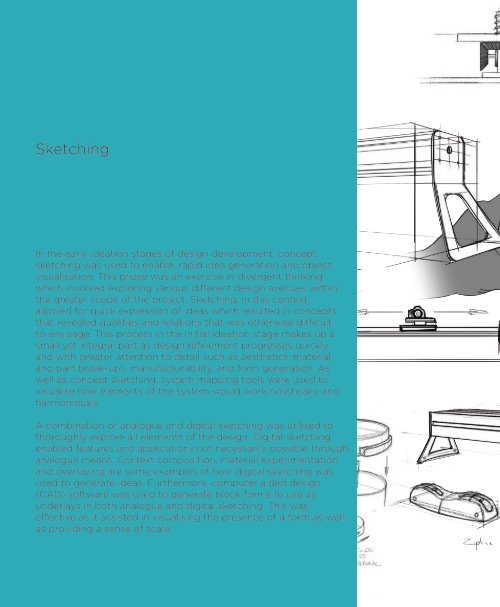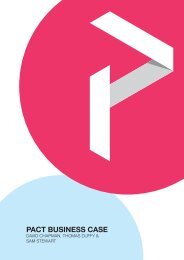Mono Magazine
Create successful ePaper yourself
Turn your PDF publications into a flip-book with our unique Google optimized e-Paper software.
Sketching<br />
In the early ideation stages of design development, concept<br />
sketching was used to enable, rapid idea generation and object<br />
visualisation. This phase was an exercise in divergent thinking<br />
which involved exploring various different design avenues within<br />
the greater scope of the project. Sketching, in this context,<br />
allowed for quick expression of ideas which resulted in concepts<br />
that revealed qualities and relations that was otherwise difficult<br />
to envisage. This process in the initial ideation stage makes up a<br />
small yet integral part as design refinement progresses quickly<br />
and with greater attention to detail such as aesthetics, material<br />
and part break-ups, manufacturability, and form generation. As<br />
well as concept sketching, system mapping tools were used to<br />
visualise how elements of the system would work holistically and<br />
harmoniously.<br />
A combination of analogue and digital sketching was utilised to<br />
thoroughly explore all elements of the design. Digital sketching<br />
enabled features and applications not necessarily possible through<br />
analogue means. Context composition, material experimentation<br />
and overlaying are some examples of how digital sketching was<br />
used to generate ideas. Furthermore, computer aided design<br />
(CAD) software was used to generate block forms to use as<br />
underlays in both analogue and digital sketching. This was<br />
effective as it assisted in visualising the presence of a form as well<br />
as providing a sense of scale.






